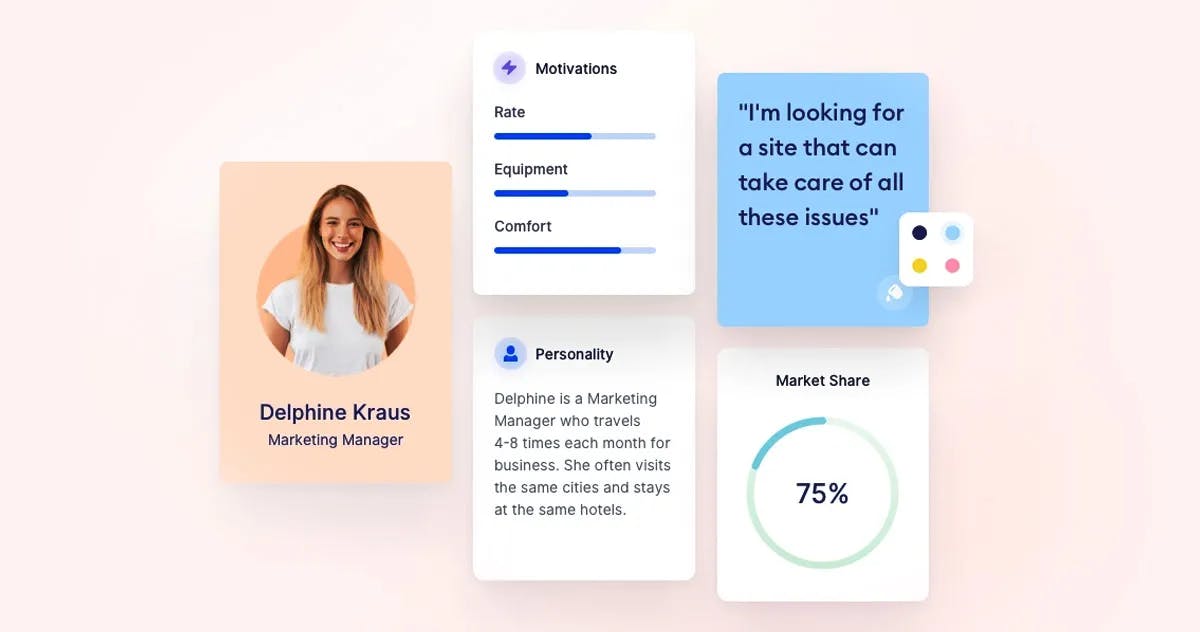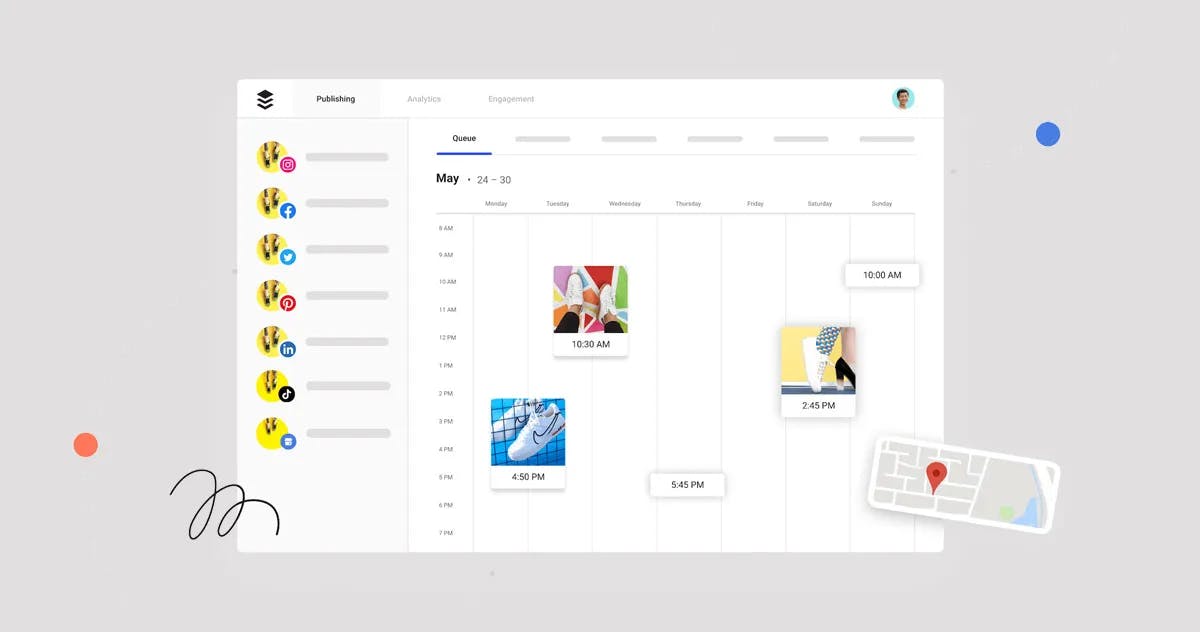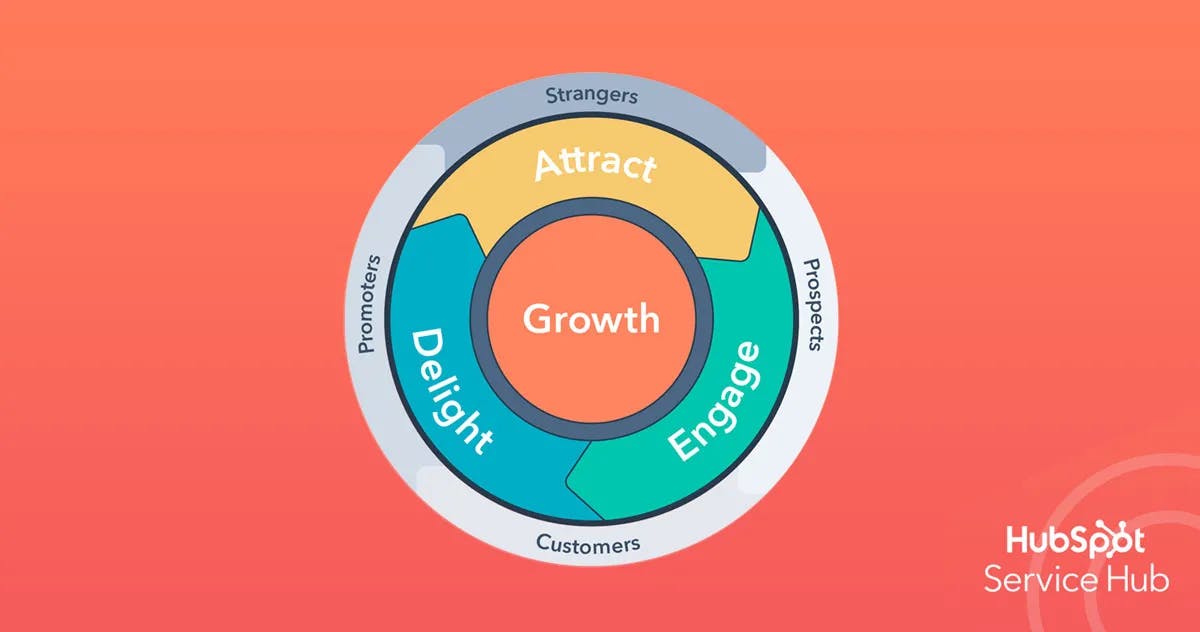We have been made aware of unauthorized use of our company name in fraudulent activities. Fleava only operates through fleava.com. Any other domains or contacts claiming to represent us are fraudulent.
If you receive suspicious messages, do not engage—report them to the authorities. For official inquiries, contact hello@fleava.com.
Building your Digital Strategy: The Right Way
/ Journal — Insight: Marketing
Digital strategies rely on short-term and also long-term, month-to-month roadmaps related to actionable items and scalable businesses. Customer insights, customer trends, market planning, data science, data analysis, and product strategy are things that are indispensable in building a digital strategy. All business strategies will eventually turn to digital plans to further develop the business itself.
The Definition of Digital Strategies
A digital strategy, also known as a digital media strategy, is a blueprint for maximizing the financial gains from projects that focus on technology, data science, and analytics. A cross-functional team including representatives from executive leadership, marketing, and information technology (IT) is necessary for a successful digital strategy.
The digital strategy's main goal is to employ technology to boost organizational effectiveness, whether that entails developing brand-new goods or rethinking existing procedures. It outlines the strategy a firm will use to develop new technological competitive advantages as well as the methods it will employ to carry out these improvements.
Since new technology enables creative businesses to offer services that weren't previously conceivable, this typically involves modifications to business structures. It's critical to keep in mind that a digital strategy is both an idea and an actual product, meaning it should finally result in the development of a detailed plan or roadmap. You can change the specific strategies you've chosen to use, but you should remain steadfast in your understanding of what being digital means for your business.
The digital strategy's main goal is to employ technology to boost organizational effectiveness, whether that entails developing brand-new goods or rethinking existing procedures.
How to Do and Step by Step Create a Digital Strategy
There are many ways to slice and dice a strategy. Most importantly, it must serve as a blueprint, a framework, or a roadmap. Call it what you want, but it must be structured enough so you can stay on track.
1. Identify Your “Why” First
Everything begins here. What is the purpose of your organization? Although it seems like a straightforward question, the solution requires digging deep.

The iconic TED Talk by Simon Sinek: Start with "Why".
In his iconic TED Talk, Simon Sinek skillfully explains how to apply his golden circle process to uncover the "why" in your company. He makes the link between extraordinary leaders, outstanding brands, and the idea that customers buy your motives rather than your actions. It will be a lot simpler to create a successful brand story, real messages, and compelling content once you can pinpoint the fundamental "Why?" of your company.
2. Recognize The Current Business Environment
There is little point in designing a digital strategy in a vacuum while doing so. It is crucial to comprehend the target organization we are producing it for.
Because they were concentrated on the incorrect stage for the organization, many outstanding digital strategies that we've seen have failed. Before focusing on innovation, a corporation, for instance, might need to get the fundamentals correct. We've also witnessed tactics with really solid intentions fall short because they lacked the originality to compete with and surpass the opposition. Consequently, it is crucial to comprehend the company's environment. Similar to how a coach might increase performance by tailoring their instruction to the athlete's current state of fitness.
3. Data Analysis for Your Digital Strategy
Information is everywhere, so gather it. No matter how big or small, however shallow or deep, find information and capture it somewhere. Ideally on a wall, so it can be quickly visualized, as you will then be able to see just how much information is available. At this stage, don’t be concerned about what the information is telling you. This stage is just about identifying the ‘data points’.
4. Establish Your Goal
A huge international non-profit whose chief marketing officer we recently spoke with was considering investing in a digital strategy. She replied, "We only have one goal: to solve world hunger," when we asked her what her top three priorities were. However, if you want to know if your efforts were successful, your goals must be both attainable and measurable in the short and long terms. Your objectives must be time-bound, relevant, quantifiable, reachable, and explicit. Choose your top three objectives. Put them on paper. Keep saying them over and over. This will direct your plan of action.
Your objectives must be time-bound, relevant, quantifiable, reachable, and explicit.
5. Know Customer Trends
Understanding your audience is the first step in crafting a tale that will appeal to them. It takes a little more than brainstorming to do this. Based on the kinds of people you attract and want to target, you should try to develop three to four personalities. A comprehensive persona will include information on the person's past, career, values, objectives, concerns, and habits while making decisions.

Evolt: User Persona creator tool.
You don't have to come up with this out of thin air if that sounds too overwhelming. Interviewing your audience is a sometimes overlooked strategy for developing audience profiles. To paint a fairly accurate picture of the audience you are marketing to, this can include one-on-one interviews and internet surveys. Establish your personas. Your wall should contain them. Name these imaginary individuals. Talk about them like you know them. since you do.
Understanding your audience is the first step in crafting a tale that will appeal to them.
6. Product Strategy
How the product will help the company is described in the product strategy. It outlines the issue the product will address and the effects it will have on both customers and the business. Once your plan is clear, you can use it to develop the product definition, which specifies what you'll construct and when. Then, using the product plan as a benchmark, you can assess your success before, during, and after production. Key objectives are necessary to develop a product strategy. You will accomplish these precise objectives or KPIs as a result of creating your product.
7. Product Roadmap
A product roadmap's major objective is to align a product's vision with a company's business goals. As a result of strategic planning, a product roadmap is produced. It outlines a product's executive strategy as well as its general objectives. The following critical components of a strategic product roadmap are often included: product vision, strategy, goal, initiative, feature, timeframes, status markers, and metrics.
The number of teams involved in road mapping may vary based on the product you are developing and the methodology you are using. The engineering team, UX team, sales team, marketing team, support team, operational team, designers, and testing team are typically present. They are the ones who will work on the finished item.
Any product roadmap must be unambiguous and easy to comprehend. This aids a product manager in leading all the teams during the development process and ensuring that they are in line with customer needs and company goals. An applicable metric is a product roadmap since it is beneficial.
A product roadmap's major objective is to align a product's vision with a company's business goals.
8. Construct a Journey Map
The next step in the process is to create a path map if you are certain of your target audience. Your understanding of the online interactions you have previously had from people as well as the possibilities for additional or other types of interactions will improve with the aid of a trip map. Your path map can be more specific the better your audience and their habits and behaviors are understood. Your digital strategy will be more adaptable the more specific your trip map is.
9. Construct a Content Strategy
Find out what your audience wants and needs, then think of inventive ways to provide those needs. People spread positive messages, adhere to routines, and react appropriately to certain situations. You cannot go wrong if you consider quality, consistency, and customization.
Make a content strategy tapestry by outlining the types of content that would be appropriate for each of your target groups, then classifying them accordingly. There may be some overlaps, but that's good because the end product will be a lovely content tapestry.
Based on the strength of your campaign and the resources you have, you can develop this for a certain month, quarter, or season.
You cannot go wrong if you consider quality, consistency, and customization.
10. Create a Content Schedule
Calendars are timeless, even while the digital world develops quickly. The key takeaway from this is that strategic goals call for strategic means. A successful digital strategy will probably include numerous branches, each with its own channels, content types, due dates, and deliverables. Half the struggle is keeping track of that, but you shouldn't let it slow you down.

Buffer: A content calendar scheduling tool.
A helpful content calendar lists the staff members in charge of developing, approving, and releasing each piece of content, as well as benchmarks and significant industry events.
Use project management software or a color-coded Google Spreadsheet to create a complete calendar in advance to prevent avoidable workflow issues during peak periods.
11. Customer Insight
Having a thorough awareness of your consumers' activities, interests, and even wants is referred to as having customer insight. You can communicate with your customers in a highly personalized way and consistently offer them added value that fosters strong loyalty and long-lasting relationships by analyzing the wealth of data you already have about them, including browsing history, purchase patterns, returns, campaign response patterns, demographics, and predictive modeling.
The proper customer intelligence tools must be at your disposal. Utilizing cutting-edge technology (such as customer modeling, predictive analytics, machine learning, and artificial intelligence) to foresee your customers' requirements and wants is necessary when looking for trends in their data. The next step is to create communications and offers that perfectly suit the individual affinities, timing, and channel choices of each customer.
12. Regularly Measure and Review Strategy
Digital marketing has no shortage of data. Numerous third-party platforms provide various types of data reporting, and all the major platforms provide analytics options.
Once you have data, you'll be able to determine what's working and what isn't—you'll have actionable insights.
While many businesses revisit their strategy yearly, better teams think about it at least once a month (but ideally even more often than that). Additionally, the digital strategy can support any existing planning techniques used by your company, such as Objectives & Key Results, which might be a component of a quarterly planning framework.
13. Market Plan
Sales forecasts and analyses of previous promotional efforts are part of the market planning process's initial phase. The process of product analysis enables a business to determine which elements of the strategy should receive more attention or need to be altered. In addition to assessing the company's competitive position in the relevant market, the analysis also takes into account how to put new business strategies into practice.
Organizing marketing goals and tactics is the second stage. Here, it is essential to develop the connections between the suggested actions in order to effectively carry out the plan.
The process of product analysis enables a business to determine which elements of the strategy should receive more attention or need to be altered.
The framework of Digital Strategies
What is exactly a framework for a digital strategy? it's a document that lays out the progression of the marketing process, outlining crucial conditions and significant touchpoints. It guarantees that nothing in the intricate procedure is missed.
Digital strategy frameworks come in a variety of forms and address many facets of the field, including communications, planning, and strategy. Some incorporate every facet, while others concentrate on a single one. You must be aware of your company's needs and priorities while developing your own to come up with a model that effectively supports your goals.
You must be aware of your company's needs and priorities to come up with a model that effectively supports your goals.
1. RACE Planning
RACE is a mnemonic that stands for Reach, Act, Convert, and Engage and was created by the learning platform Smart Insights. These four steps pertain to the online marketing activities you must carry out as you interact with customers through various channels and at various points in their purchasing cycles.
- Reach, entails increasing brand recognition and visibility while promoting your website and social media pages. Your key performance indicators include, among others, website traffic, earned media, external links, and online interaction.
- Act (Short of Interact), entails urging visitors to take a certain action on the website or social media page. Your key performance indicators in this case include, among other things, the bounce rate, time spent on the site, and the number of newsletter sign-ups.
- Convert, entails converting devoted supporters into paying clients. The number of leads, conversion rate, sales, and income are just a few of your important performance indicators here.
- Engage, In order to encourage client retention, engagement implies forming trusting relationships with them. Customer churn rate and repeat customer rate are a few of your critical performance measures in this situation, among others.
RACE Planning, at its heart, can assist you in developing an efficient digital marketing plan by outlining the crucial actions for each stage of the customer journey.
2. Marketing Funnel
One of the most popular digital strategy frameworks, it illustrates the path customers travel while engaging with your business, from learning about your goods and services to making a purchase. There are four stages in the marketing funnel:
- Awareness, This occurs when a prospective consumer views a social media post or banner advertisement or learns about your company from an influencer or a friend.
- Interest, A potential buyer is enamored with your brand and is researching you online by using other websites or reading reviews.
- Consideration, A prospective buyer recognizes their issue and your brand as the remedy.
- Action, The potential client acts, makes a purchase, or schedules an appointment with you.
These stages are quite easy to track in an e-commerce platform. A potential consumer enters your website (awareness), clicks on a product and reads the description (interest), adds something to their shopping basket (consideration), and then completes the purchase (action).
3. Flywheel Model
Customers are at the center of all business activities according to the Hubspot model called The Flywheel. In comparison to the marketing funnel, it is easier to understand. The consumer is the focal point of the funnel. It serves as the driving power in the Flywheel. It's the item that gives the whole plan of action its "spin" or energy.

Hubspot's Flywheel Model Diagram.
Customers are placed at the center of the digital strategy framework, surrounded by teams from sales, marketing, and customer support. These teams all try to improve the purchasing experience, which mostly entails reducing "frictions" or anything that slows down the flywheel's rotation. It displays the buyer journey, which is outlined in three parts, similar to previous models.
- Attract, earn people’s attention and reduce barriers to awareness.
- Engage, build rapport and make it easy for customers to talk with you.
- Delight, support, and empower customers to reach success. When they achieve it, they’re more likely to talk about their experience with others, which expands business opportunities.
Because the Flywheel model is designed to create synergy among business teams, it minimizes gaps in handoffs. Moreover, it speeds up digital marketing because it reduces friction at every stage of the customer journey.
If you are having trouble understanding or need help developing a digital strategy for your business, you can use a digital strategy consulting service for now.
Strategic consulting helps businesses remain competitive by analyzing business practices and developing plans for improvement. They assist in identifying industry sectors, defining industry clusters, and developing strategies to increase productivity and income so that businesses can thrive using digital strategies.
Strategic consulting helps businesses remain competitive by analyzing business practices and developing plans for improvement.
Examples of Successful Digital Strategy Development
1. Alibaba
Even though AI has grown to be a popular corporate solution, many executives are still considering the best deployment strategies for their respective teams. Alibaba is a prime instance of this working well. Thanks to the Chinese government's backing, investments, and dedication, the world's largest e-commerce company is making enormous AI strides. China is on track to surpass the United States as the world's technological superpower, with plans to create a $1 trillion AI sector by 2030.
Alibaba has maintained its competitiveness by packaging and sending out more things more effectively because of this readiness to invest in new technology. Through services like intelligent product search and suggestion, chatbots for customer support, and picture matching, Alibaba is also utilizing AI technology. By anticipating what customers may require at any given time, it has been able to adapt shopping experiences for customers and improve shopping process optimization. Alibaba intends to use machine learning in a variety of ways, from financing to face recognition, as it continues to investigate and grasp the possibilities it contains.
2. Adobe
There have been many more instances of cloud suppliers upending traditional ones in recent years than there have been of traditional vendors successfully migrating to the cloud, and this tendency doesn't appear to be reversing.
Adobe is one example of a company that has nearly entirely migrated to the cloud. Adobe deliberately migrated its whole product base online in 2013 rather than sticking with its preexisting business strategy, and it really paid off. According to the company's most recent financial reports, it generated a record $4.11 billion in sales during the fourth quarter of the 2021 fiscal year, an increase of 20% from the previous year.
Adobe's success up to this point has mainly been attributed to its understanding of people and how they use its products on a daily basis. Adobe understood it had to reorient its workforce to the needs of the customer when it made the decision to go from a physical software model to a cloud-based one. To solve this, it organized a staff "experience-a-thon" where staff members could test and critique Adobe products as if they were actual customers. In the middle of a significant technological revolution, this promoted employee involvement and assisted in changing the culture.
3. Netflix
The online streaming provider Netflix is without a doubt the face of digital disruption. In approximately 200 countries around the world, Netflix currently has an astonishing 222 million international customers. The pandemic's lockdown limitations, which hampered movement and led to an increase in homes' streaming media services, are mostly to blame for this rise in usage over the past few years.

Netflix is without a doubt the face of digital disruption.
Three factors have been primarily responsible for Netflix's exceptional success. First off, as Netflix switched to becoming largely a streaming service, streaming technology advanced faster than anticipated. Second, thanks to the widespread use of smartphones and tablets as well as the development of smart televisions, Netflix is now always accessible to its users. Finally, the shift in watching preferences brought about by the first two significantly improved Netflix's value proposition.
Due to these elements, Netflix was able to completely alter the internet streaming landscape and is currently among the most extensively used streaming services worldwide. Additionally, it has enabled Netflix to innovate in other ways, such by creating a number of popular original episodes and films for its platform.
Digital Strategy in Digital Transformation
In conclusion, digital strategy refers to the use of digital technologies at the organizational or line-of-business levels to achieve strategic goals, whereas digital transformation refers to the use of technology to significantly modify business efficiency or impact.
Digital Transformation entails completely reimagining the firm while utilizing the most recent technologies, standards, methods, instruments, and abilities. The Digital Strategy focuses on the company's unique difficulties and generates applications or solutions. In addition, whereas digital transformation is long-term, digital strategy is short- and medium-term (that involves trial and error, prototypes, and changing everything, this usually takes a long time).
The Digital Strategy focuses on the company's unique difficulties and generates applications or solutions.
Get in touch with us about your Digital Strategy project.

